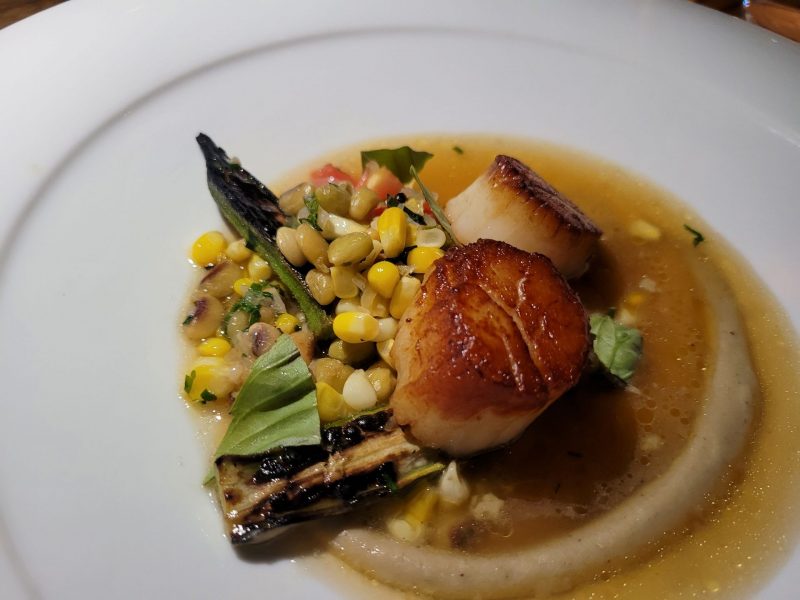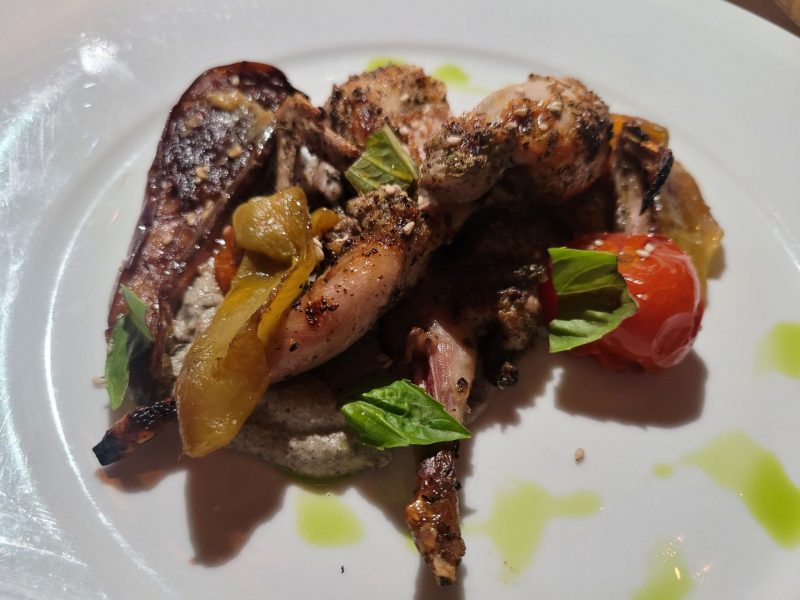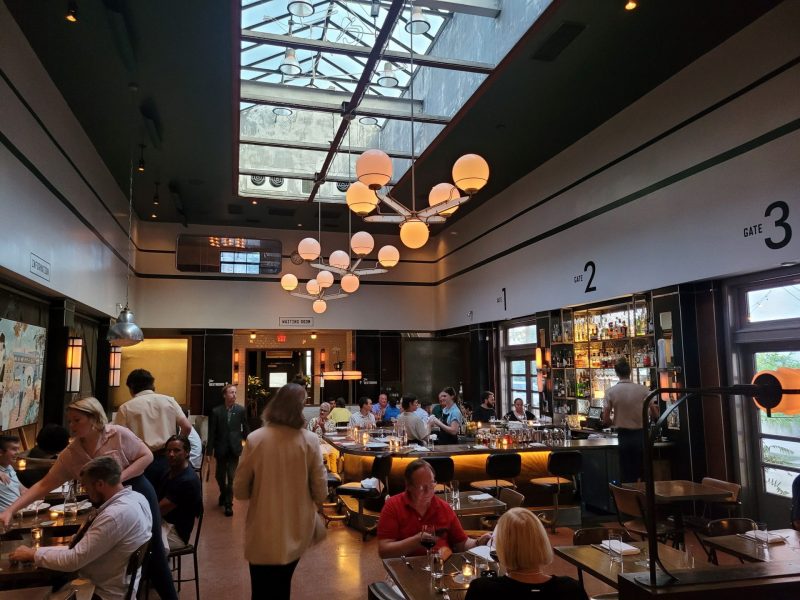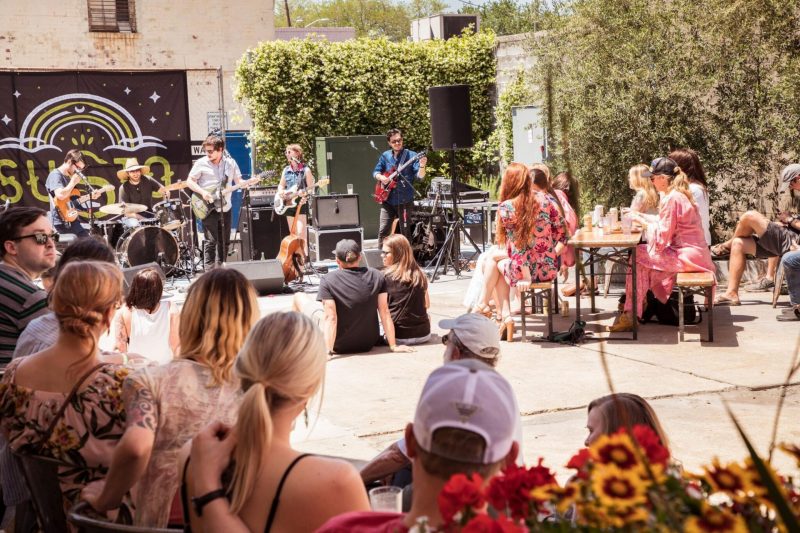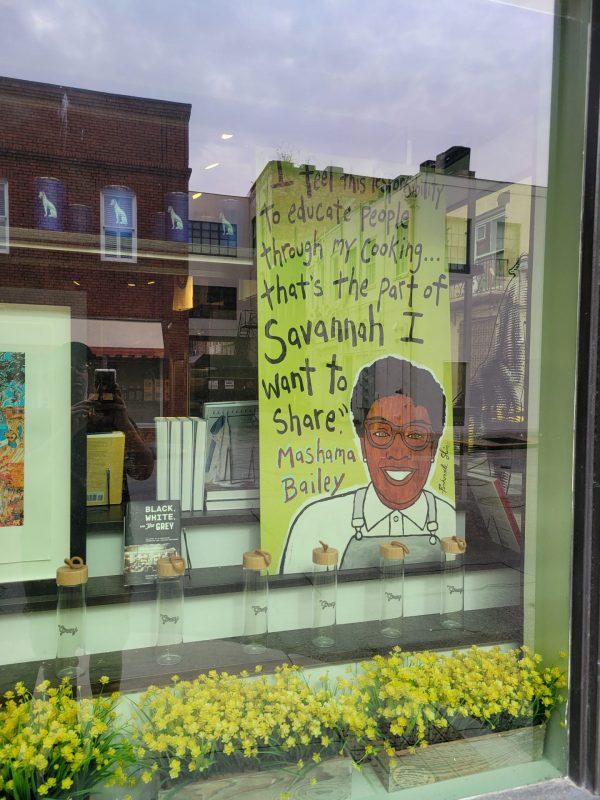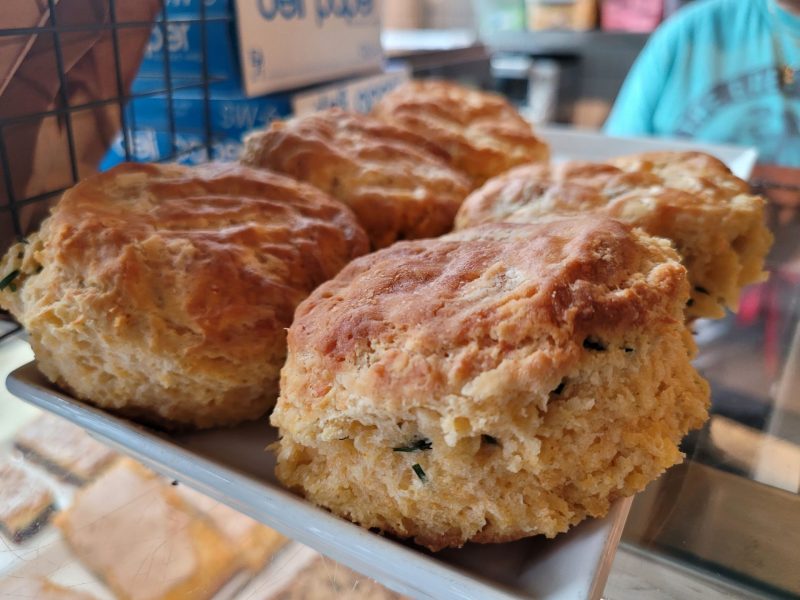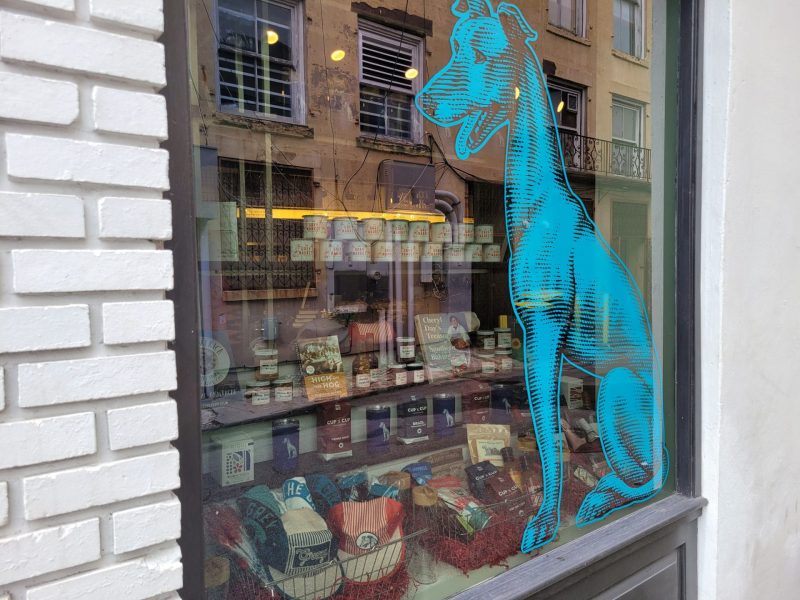This article originally appeared in the Fall/Winter 2022-2023 print issue of Quench Magazine.
“Savannah doesn’t know that the nineteenth century has ended.”
Damon Lee Fowler, an influential food writer in this southern city, noted that popular joke in his definitive 2008 work, The Savannah Cookbook. Fowler quickly dismissed the joke as “silly” given the city’s evolution in recent years. Within a decade of Fowler writing those words, Chef Mashama Bailey and her business partner John O. Morisano’s restaurant The Grey has shown just how forward-looking Savannah’s dining scene had become.
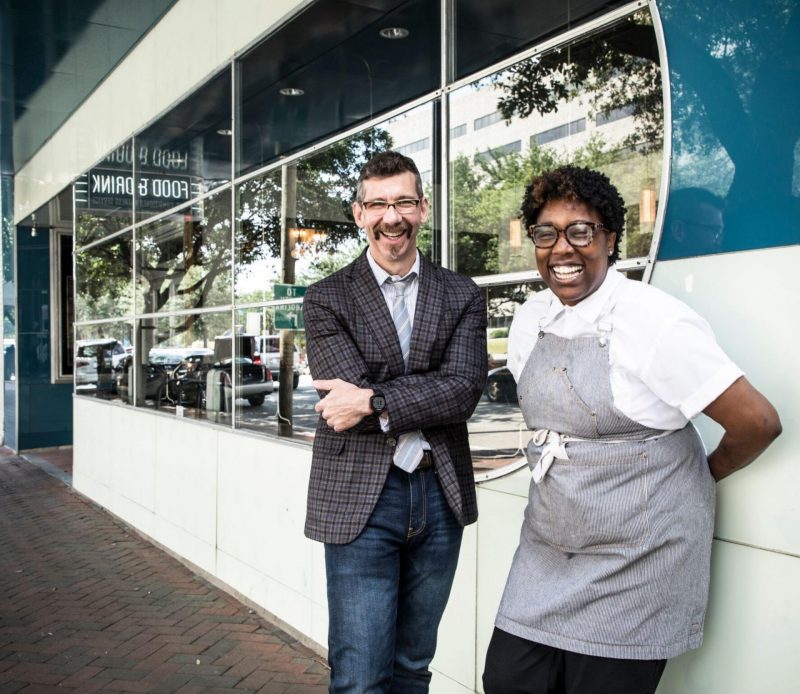
The initial driving force behind The Grey, the peripatetic Morisano grew up in New York and then spent years in Paris and Los Angeles before moving to Savannah. Morisano is acutely self-aware of his journey when it comes to race relations. On The Grey’s website he wrote:
I am very white and as much as I would love to make the claim that “I have a lot of Black friends,” I don’t. I grew up in a closeknit, white neighborhood of Italian and Irish descent in Staten Island, New York. My professional career also was not one big on integration – the white collars in the world in which I have spent most of my adulthood primarily adorned the necks of other white people. That said, race and culture have always fascinated me.
That thinking informed The Grey’s mission and aesthetic.
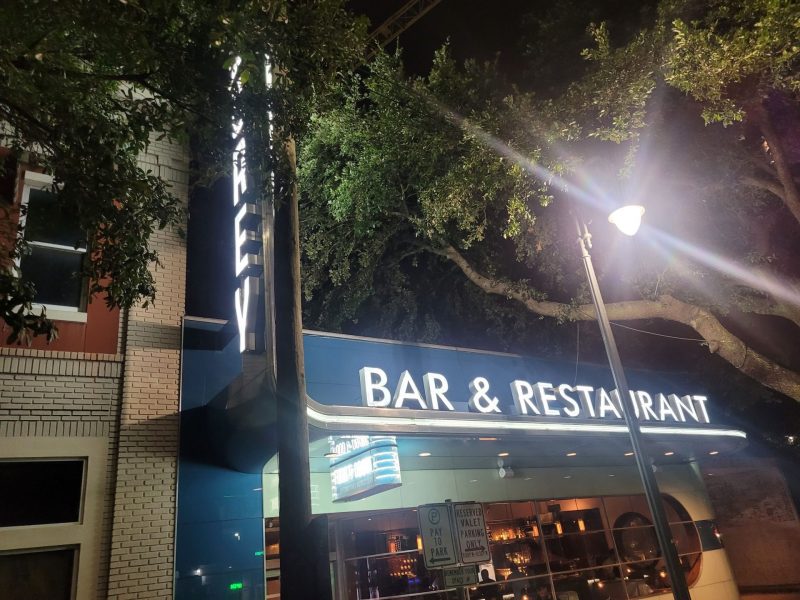
When Morisano first viewed the space, it was the dilapidated remains of the Atlantic Greyhound Bus Terminal which opened in 1938 on what was then called West Broad Street. The bus station was a major transportation hub for the region in its heyday, with nearly a hundred arrivals and departures daily. During that time, African American bus passengers experienced humiliating limitations due to segregationist laws and policies. They had to wait, eat, drink, and ride separately from Whites who used the same travel facilities.
The station eventually closed in 1964—the same year that landmark civil rights legislation went into effect—when the current bus station opened in another part of town. Though coincidental, the timing of the original building’s closure is noteworthy because so many public facilities across the United States, not just in the South, permanently closed rather than have Black customers on equal footing with Whites. In Savannah’s case, the bus station move was already in motion prior to 1964.
After the Atlantic Terminal bus station closed, the location housed various businesses, and restaurants, until a part of the building’s roof collapsed in 2002. It remained vacant until Morisano purchased the location in late 2013. He hired a local architectural firm to revive the terminal’s prior glory . . . and he kept the vestiges of the Jim Crow indignities. Along with the signs indicating where departure gates were previously located, others point out where “colored” passengers, to use the terminology of the time, had to wait in a separate section of the terminal.
The restaurant’s name is intentionally contracted and a constant reminder of the building’s past. The Grey’s visual concept was being realized but a beautiful setting doesn’t mean much if the food isn’t top notch. Morisano needed to recruit a chef, particularly an African American chef, to fulfill the vision of a welcoming space for everyone, regardless of race. Enter Chef Mashama Bailey.
When Chef Bailey met Morisano, she was a sous-chef at a highly-regarded New York City restaurant called Prune, helmed by celebrity Chef Gabrielle Hamilton. Even though Chef Bailey grew up in New York City, she had a Savannah connection; it’s her mother’s hometown, and she spent summers there during her childhood. After Morisano sold her on the opportunity, Chef Bailey had to culinarily translate the idea of racial reconciliation into the restaurant’s menu.
Her apt new concept: “Port City Southern Cuisine.” As a major port on the Atlantic seaboard, Savannah became home to a dizzying array of cultures: European colonizers (primarily from Great Britain and France), enslaved West Africans, Jews fleeing persecution, and the remnants of the indigenous people who lived in the area prior to European contact. Chef Bailey intermingles all of these influences to feed her guests innovative food in a fine dining atmosphere.
I was fortunate to dine at The Grey in early 2015, a couple of months after it opened.

Diver Scallops & Succotash 
Eggplant, Quail & Bene Seeds 
Foie Gras, Melon, Ham & Basil
My meal was: a salad of winter greens with comeback sauce (a spicy condiment similar to remoulade), tomato and black-eyed peas, braised eel in a broth spiked with cabbage, tomato and onion, roasted beets with buttermilk yogurt and beet tops, and a whole fried sweet potato drizzled with sorghum buttermilk. For dessert, there was cornmeal pound cake with Leopold’s vanilla ice cream and caramel popcorn. A delightful palate cleanser was a cube of frozen lemon Kool-Aid, something the local kids and chief consumers call a “thrill.”
A more recent visit in late summer of 2022 quelled any doubts about The Grey remaining at the top of its game. The appetizers were a combination plate of a creamy catfish dip, spiced pecans, a Savannah red rice ball with green goddess dressing, ham hock terrine, and a catfish deviled egg topped with trout roe. Another highlight out of many was a serving of diver scallops with a succotash of field peas, ham hock fume, and charred okra.
The Grey’s appealing story piqued media interest almost from the beginning. From the local press to the New York Times, the accolades have piled up over the years. In 2015 alone, The Grey was a top twenty-one new restaurant for Eater.com, a top ten new restaurant for Gayot.com, a top five restaurant of the year for Food & Wine. In 2017, it was Eater.com’s “Restaurant of the Year,” and one of Southern Living’s best restaurants of the year. Chef Bailey won the 2019 James Beard Foundation Award for Outstanding Chef: Southeast, and the 2022 James Beard Foundation Award for Outstanding Chef . . . of the entire country! This prestigious organization has previously recognized only two other Savannah restaurants: Mrs. Wilkes’ Dining Room was named an “America’s Classic,” and Elizabeth on 37th was nominated for “Outstanding Service.” Both restaurants received those honors in 2000.

The Grey’s Dining Space 
The Yard at The Grey
Chef Bailey acknowledges that the exorbitant attention adds pressure. “If I’m at a food festival representing The Grey, I need to be best in show or if I’m working with a new cook, I need to have a plan and get my messaging right the first time,” she said. “When dishes hit the table, they should wow our guest. That doesn’t always happen, so I feel the pressure of living up to people’s expectations. At the end of the day, I love that about this business . . . it constantly keeps you in check. Eventually, you will have to let the ego go and just do the best you can.”
Today, The Grey’s vibe is one of expansion. About a mile from the restaurant, Chef Bailey and Morisano have opened a combination food service and specialty grocery store called The Grey Market. In 2021, the team opened similar concepts; The Grey Dining Bar and The Grey Market, at the Thompson Hotel in Austin, Texas. The Grey Market concept intrigues on many levels. There’s an entire section of Grey-related merchandise that reveals a comprehensive marketing strategy. They’ve also decided that it’s not all about them. This market showcases and celebrates local and regional food and drink products made by others.

The Grey Market 
Biscuits at The Grey Market 
The Grey Market
The Market’s dining space conjures up memories of the lunch counters targeted by Black Savannah activists for sit-in demonstrations in the early 1960s. The menu is decidedly more casual than its fine dining counterpart, but no less playful, refined and delicious. At breakfast, for example, diners may opt for wild mushroom toast, creamy grits with braised greens, or one of the tempting baked goods. Market options also include a number of previously prepared “Grab ‘n’ Go” salads and sandwiches.
As for Morisano and Chef Bailey’s grand vision of a common ground for a city divided by race, the work endures. This is a very small sample size, but on my two visits, there were certainly Blacks and Whites in the restaurant, but they weren’t eating together. A persistent challenge is cultivating a steady clientele of Black diners. “It’s still a work in progress,” Chef Bailey reflected. “We are a downtown restaurant, and if you live downtown most likely you have heard of us and have come by for a drink or a meal. Many Black folks that live in the downtown area don’t seek us out because we may not be in their price range. But that is not true for the entire city. I think we are becoming a special occasion destination in Savannah’s Black community.”
As Morisano freely admits on The Grey’s website: “I still do not have a lot of Black friends, but I do have a few more than I used to, and I call that progress as well.” Through their words, efforts, and food, Morisano and Chef Bailey remind us that we all have work to do. In a fractious society where there are fewer and fewer spaces where people from various walks of life gather, restaurants like The Grey invite us to acknowledge the past and forge a future through the fellowship of food.
Sources:
Savannah’s old Greyhound terminal could soon earn a place in history, www.savannahnow.com – Dec 5, 2016
The Grey Invites Guests to Dine in the 1930s, www.savannah.com
History and The Grey « The Grey Blog, www.thegreyrestaurant.com
Adrian Miller is a food writer and recovering attorney who lives in Denver, Colorado. He served as a special assistant to President Bill Clinton with his Initiative for One America – the first free-standing office in the White House to address issues of racial, religious and ethnic reconciliation. Adrian’s first book, Soul Food: The Surprising Story of an American Cuisine, One Plate at a Time won the James Beard Foundation Award for Scholarship and Reference in 2014. His most recent book, Black Smoke: African Americans and the United States of Barbecue, was published in 2021 and won the 2022 James Beard Award for the same category. Adrian is featured in the Netflix series High on the Hog: How African American Cuisine Transformed America.

